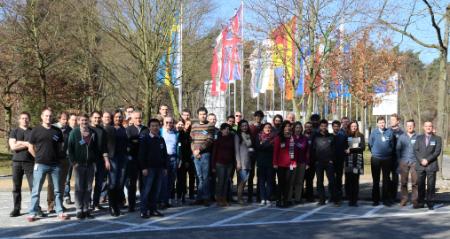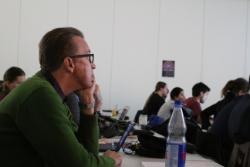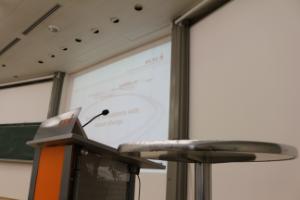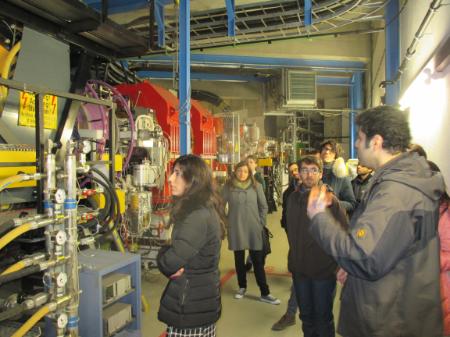Computer-aided Optimization of Accelerators
The oPAC network, initiated and coordinated by the QUASAR Group, has organised a three-day long workshop on Computer-Aided optimisation of Accelerators (CAoPAC) at the GSI Helmholtz Centre for Heavy Ion Research in Darmstadt, Germany from 10 – 13 March 2015.

The workshop was attended by more than 50 delegates from all across Europe. It included sessions about modelling of optics and beam dynamics, control systems and data analysis, generation and propagation of synchrotron light, and particle physics simulations for accelerators.

A special highlight was a guided tour of the GSI experimental facilities on Thursday morning. This included the ion trap SHIPTRAP in which many of the world’s heaviest elements were first created and observed, and the facility in which carbon ion radiotherapy techniques for cancer treatment were first developed. Following the tour, QUASAR Dr. Adam Jeff gave a talk about the use of simulation codes for beam diagnostics optimization purposes. Presentations about commonly used Monte Carlo and 3D electromagnetic field simulation codes complemented an exciting overview of state-of-the-art simulation techniques that saw many questions and lively discussions. In the afternoon workshop participants had the opportunity to present and discuss their research in a dedicated poster session.
The last day focused on light generation processes and how this can be adequately modelled with advanced simulation tools, such as the commercial ZEMAX software. The event concluded with a presentation by oPAC Fellow Manuel Cargnelutti from Instrumentation Technologies 
Further information about the event and all presentations can be found on the workshop indico page. The network is much obliged to GSI for hosting the workshop and to all the Fellows who contributed to the success of the event.
